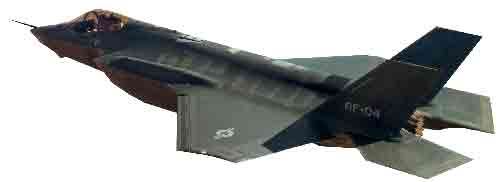March 1, 2012
By Jamie J. Gooch
 New product introductions often have cost over-runs, but when your new product costs $90 million each and multiple governments are footing the bill, the consequences are multiplied through the lens of public debate.
New product introductions often have cost over-runs, but when your new product costs $90 million each and multiple governments are footing the bill, the consequences are multiplied through the lens of public debate.
Take, for example, the Lockheed Martin F-35 Lightning II. It’s a fifth-generation fighter plane that incorporates stealth technology. The family includes three models: a conventional takeoff and landing (CTOL) variant, a short take off/vertical-landing (STOVL) variant, and a carrier-based variant. The U.S. plans to spend about $379.4 billion on 2,400 of the jets. Turkey, Italy, Britain, Denmark, Norway, the Netherlands and Canada have also placed orders.
But the jet development was planned with a concurrent production strategy that emphasized simulation and modeling upfront, then conducted testing as planes were being produced. Intended to get the aircraft up and flying faster, the strategy led to several planes being delivered before critical issues were found via testing.
Public Fallout
The man responsible for buying weapons for the U.S. military recently called the strategy “acquisition malpractice” and said it should not have been done.
Frank Kendall, the Pentagon’s Acting Undersecretary of Defense for Acquisition, Technology and Logistics, explained the flaws in the “optimistic” concurrent strategy during a speech at the Center for Strategic and International Studies.
“The optimistic predictions, when we started the production of the F-35, that we now had good enough design tools and good enough simulations and modeling that we wouldn’t have to worry about finding problems in test was wrong,” he said.
The F-35 Lightning II by the Numbers Crew: 1 |
“So we’re finding problems with all three of the variants that are the types of things that are historically in a state-of-the-art, next-generation fighter aircraft you’re going to find, OK, where our design tools are not perfect and we didn’t model everything as precisely as we thought we had. So we’re working our way through that,” Kendall continued.
Production on the aircraft began in 2003. The first official test flight took place in December 2006.
“The hardest part of any acquisition program is the transition from development to production,” Kendall said. “And that’s where the concurrency arguments come in. You know, when should you start? And I think there’s been a tendency to start too early in some cases. And the F-35 is probably an extreme example of that.”
Congressional Consequences
That speech last month wasn’t the first time F-35 production issues made headlines. In 2010, then Secretary of Defense Robert Gates testified before the House Appropriations committee about “unacceptable delays and cost overruns” in the program, and how it was being restructured.
“We reduced the number of aircraft being purchased concurrent with testing and development,” he said. “While delaying full-scale production was not a welcome development—to put it mildly—it was important to avoid a situation where a problem discovered in testing would lead to expensive retrofits of aircraft.”
He went on to explain how the program’s manager had been replaced, more aircraft had been added to the testing program and that more than $600 million in performance fees had been withheld from the lead contractor.
The F-35 SDD flight test program plan calls for the verification of 59,585 test points through developmental test flights by Dec. 31, 2016. Through 2011, the flight test team had accomplished 12,728 test points, which exceeded the goals for 2011.
While developing a new military aircraft is a massive undertaking full of technical complexities and political wrangling, most design engineers can relate to the pressure to get a product out quickly. Though modern modeling and simulation technologies are capable of amazing things, the F-35 serves as a public example of the importance of testing early in the design phase.
Jamie J. Gooch is managing editor of Desktop Engineering. Contact him via [email protected].
Subscribe to our FREE magazine, FREE email newsletters or both!
About the Author
Jamie Gooch is the former editorial director of Digital Engineering.
Follow DE




